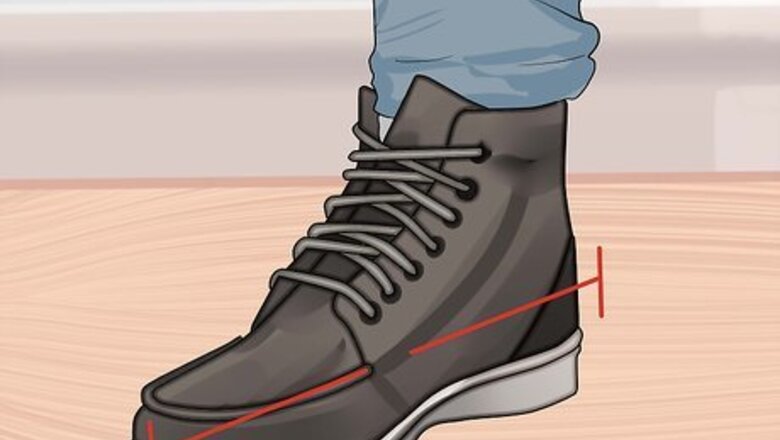
views
Choosing Proper Footwear
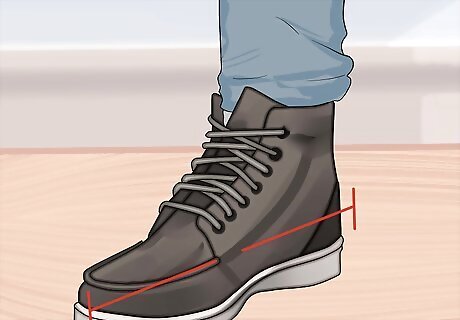
Choose shoes that are the right size. Your shoes should be neither too tight nor too loose. A properly-fitting shoe will leave a half-inch of space between your longest toe (which is not necessarily your largest toe) and the tip of the shoe. Walk around in the shoes before buying them to ensure fit and comfort. A square or rounded "toe box" (the area of the shoe in which your toes go) will provide the best fit and greatest comfort. Try on shoes before you buy them, even if you know your size. This is because sizing may vary widely from brand to brand. Purchase shoes that fit well, even if the size is different from what you are used to wearing. Feet may swell up to eight percent in the course of the day, so shop for shoes in the afternoon, as that is the time of day when your feet will be enlarged. By choosing shoes that will fit comfortably even when your feet are at their largest, you will help to prevent blisters at all times.
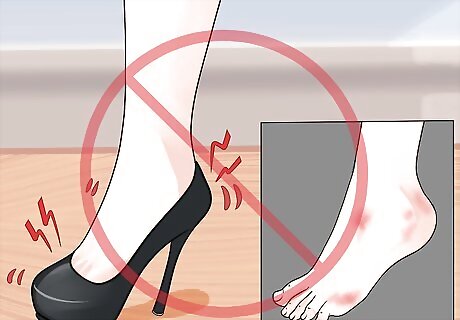
Avoid footwear prone to causing blisters. Shoes that squeeze your foot, ones that are too loose, or ones that cause you to walk abnormally subject your foot to pressure and friction that may result in blisters. Try to avoid wearing these types of shoes, which include: High heeled shoes, especially those with narrow toe boxes. These can force the toes into a cramped position, put intense pressure on the ball of the foot, and increase friction on the heel and elsewhere. Flip-flops, which put pressure on the toes as they squeeze to keep the shoes from falling off. Any overly tight style of shoe.
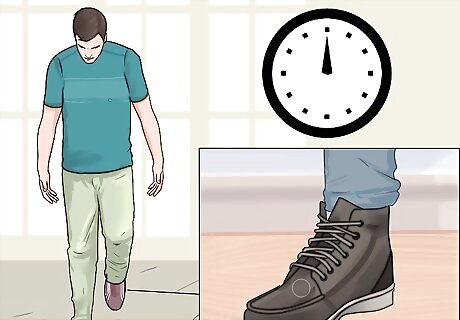
Break your shoes in. Before wearing new shoes for prolonged periods of time, wear them for just short sessions. For instance, before wearing a new pair of shoes all day long, wear them for just a couple of hours at home. This process, known as breaking in your shoes, gives them time to gradually conform to your exact foot shape so that they will fit most comfortably. It is especially important that shoes which will be worn for athletic or intensive purposes, such as hiking boots, are properly broken in before they are used normally.
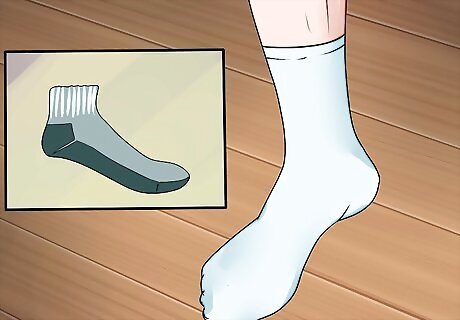
Choose the right socks. Cotton socks can absorb moisture; this can help control foot odor, but friction caused by the damp cloth also increases the risk of blisters. Instead, choose socks made of quick-drying synthetic fabrics or wool. Padded sports and hiking socks can be found at athletics and footwear stores. These can help prevent blisters. Some people prefer to wear two layers of socks to combat moisture and friction: a thin “wicking” sock and a thicker sock over that.
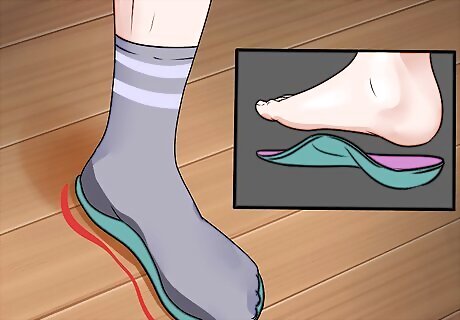
Use comfortable and supportive insoles. At footwear stores and many pharmacies, you will be able to find a variety of insoles that can be inserted in your shoe to provide more support, comfort, and a better overall fit. Make sure to purchase shoes with removable insoles so that you can replace them with more comfortable and/or supportive insoles as required. Replacement insoles may be made of neoprene (foam rubber), memory foam, gel-filled pads, and other materials. Evidence shows that neoprene insoles in particular can reduce the incidence of blisters. Insoles, especially orthopedic ones, may be available in various shapes designed to conform to different foot types. Try out different insoles until you find ones that fits your shoe and foot comfortably.
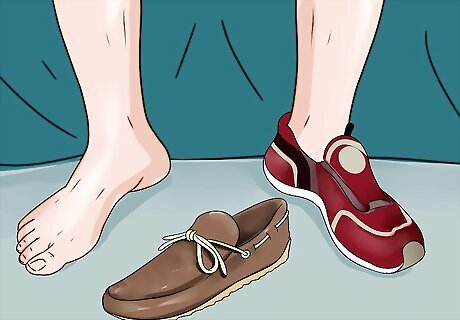
Switch your shoes frequently. For instance, don’t wear the same pair several days in a row; instead, alternate them with another pair or two. By wearing different shoes, you will help to prevent blisters by ensuring that your feet aren’t always being rubbed in the same places.
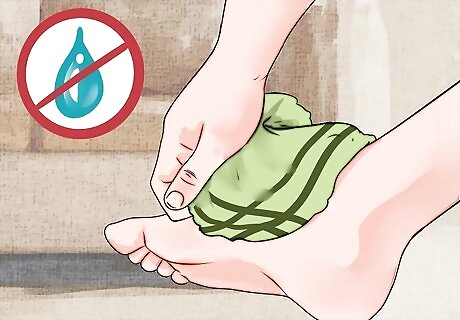
Keep your feet dry. Choose shoes made of material that is watertight but also breathable. This will keep moisture out, but also allow sweat to evaporate from your feet. Plastic and nylon shoes make it hard for your feet to ventilate. Choose footwear made of leather, canvas, mesh and other breathable materials. If your shoes or socks become wet, remove them as soon as possible. Let them dry before wearing them again. Dry your feet and put on fresh, dry socks and shoes.
Preventing Friction
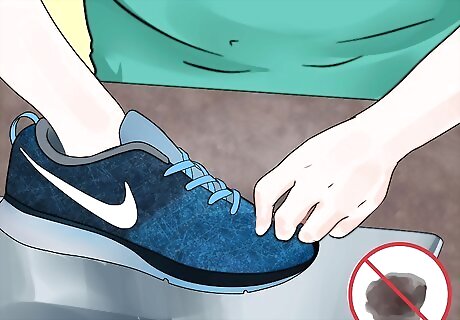
Keep debris out of your socks and shoes. When foreign material like sand and twigs gets into your socks and/or shoes, it can increase friction as you walk and thus cause blisters. Properly-fitting footwear will help keep debris out. If you feel anything in your socks or shoes that shouldn’t be there, stop and remove it immediately.
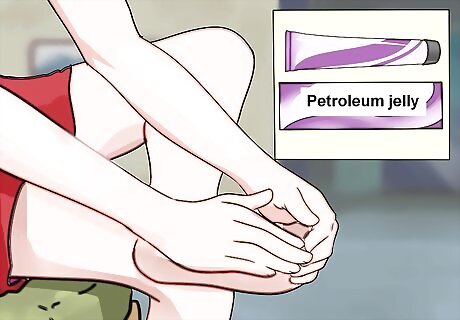
Use a lubricant. If you are prone to getting blisters in a certain spot on your feet, coat that area with a lubricant before putting on your socks and shoes. Good options include: Petroleum jelly. Talcum powder (baby powder) A foot balm such as Badger foot balm An anti-chafing ointment such as Bodyglide
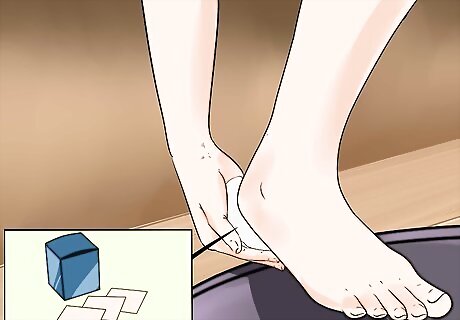
Tape problem areas of your feet. By placing a small amount of adhesive material over areas of your feet that are prone to friction (known as “taping”), you can protect them and help prevent blisters from forming. Moleskin, available at pharmacies, is preferable to duct tape (which can lose its stickiness when it becomes wet). Cut a piece of moleskin slightly larger than the area susceptible to friction. Remove the backing from the moleskin to expose its adhesive surface. Press the moleskin to your foot, smoothing out any wrinkles from the center to edge. Put on your socks and footwear.
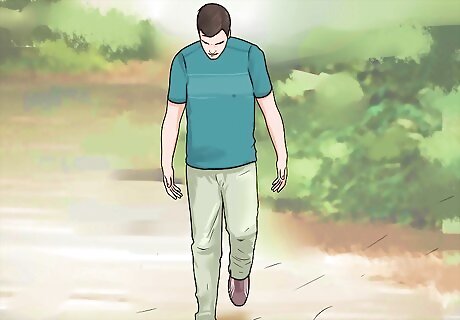
Toughen your skin by building endurance. If you increase the distance you walk, run, or hike by small amounts over time, the skin of your feet will become tougher. This can help to prevent blisters from forming. For example, if you want to start a running routine, you can prevent foot blisters caused by running if you start by running short distances before gradually building up to longer distances.
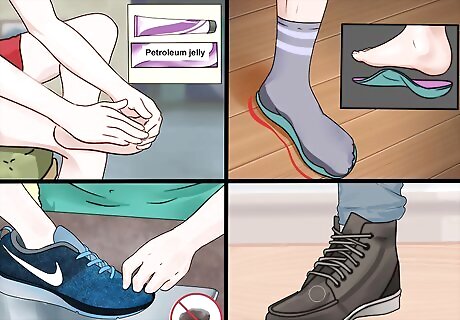
Be prepared when hiking. Hiking can put extra strain on the feet, because it may involve traveling long distances on foot in less-than comfortable footwear. You can help prevent foot blisters when hiking by following the steps above. In particular: Make sure your hiking boots are properly broken in and conform well to your feet. Wear two layers of socks. A thin sock made of a synthetic material will help to reduce friction. Wearing another sock made of a non-cotton, absorbent material such as wool will help to wick away moisture and keep your foot dry. Lubricate any part of your foot prone to blisters. In addition, keep a supply of lubricant with you in case you feel any blisters beginning to form during your hike. Apply moleskin patches to any high-friction areas. Carry a supply of moleskin with you in case you need extra protection along the way.
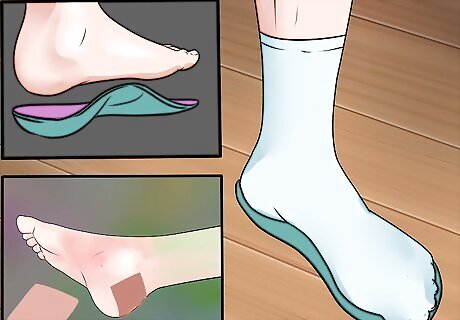
Take precautions when wearing dress shoes. Dress shoes can be uncomfortable if they are made of stiff material, if they force your feet into unusual positions, or if they are not worn very often or broken in properly. You can take some preventative measures, however: Apply moleskin patches to any high-friction areas. Lubricate any part of your foot prone to blisters. Use replacement insoles for more support and comfort.
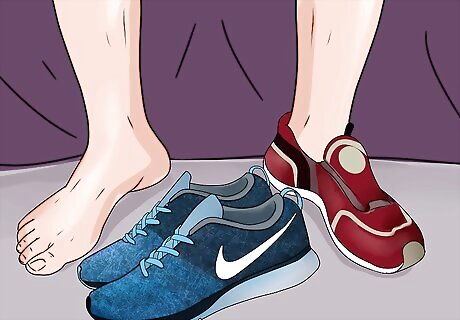
Choose and wear athletic shoes carefully. Athletic shoes are work in high-intensity situations that can cause a lot of friction and sweating. To prevent blisters in these situations, make sure to: Choose athletic shoes that fit your feet very comfortably. Make sure you properly break your athletic shoes in by wearing them for only for short sessions until they conform to the shape of your feet. Only use them for full sessions after they are properly broken in. Apply moleskin patches to any high-friction areas. Lubricate any part of your foot prone to blisters. Wear non-cotton socks to reduce friction between your foot and shoe.
















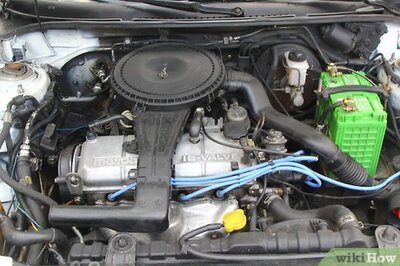
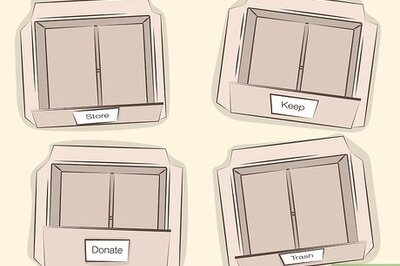

Comments
0 comment